The Boomerang Nebula reveals its true shape with ALMA. The background purple structure, as seen in visible light (HST), shows a classic double-lobe shape with a very narrow central region. ALMA’s ability to see the cold molecular gas reveals the nebula’s more elongated shape, in orange.
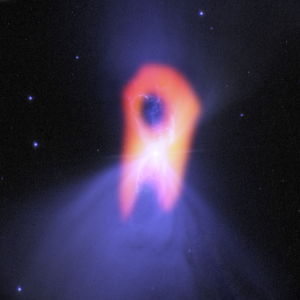
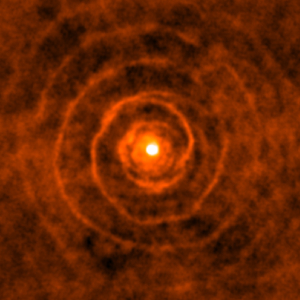
An Extraordinary Celestial Spiral with a Twist
An international team of astronomers using ALMA has unraveled the elliptical nature of the binary orbit of the old star LL Pegasi and its companion. The figure shows the composite image of molecular gas around LL Pegasi. By comparing this gas distribution depicted in exquisite detail by ALMA with theoretical simulations, the team concluded that the bifurcation of the spiral-shell pattern results from a highly elliptical binary system.
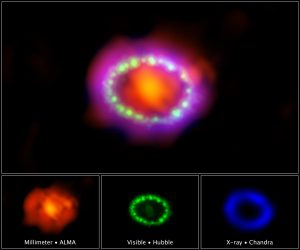
The Dawn of a New Era for Supernova 1987A
Astronomers combined observations from three different observatories to produce this colorful, multiwavelength image of the intricate remains of Supernova 1987A.The red color shows newly formed dust in the center of the supernova remnant, taken at submillimeter wavelengths by the Atacama Large Millimeter/submillimeter Array (ALMA) telescope in Chile.The green and blue hues reveal where the expanding shock wave from the exploded star is colliding with a ring of material around the supernova. The green represents the glow of visible light, captured by NASA’s Hubble Space Telescope. The blue color reveals the hottest gas and is based on data from NASA’s Chandra X-ray Observatory.The ring was initially made to glow by the flash of light from the original explosion. Over subsequent years the ring material has brightened considerably as the explosion’s shock wave slams into it.Supernova 1987A resides 163,000 light-years away in the Large Magellanic Cloud, where a firestorm of star birth is taking place.The ALMA, Hubble, and Chandra images at the bottom of the graphic were used to make up the multiwavelength view.
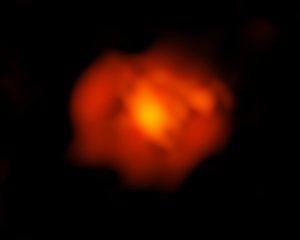
Supernova 1987A in Submillimeter
This is an image of the intricate remains of Supernova 1987A taken in submillimeter wavelengths by the Atacama Large Millimeter/submillimeter Array (ALMA) telescope in Chile. The red color shows newly formed dust in the center of the supernova remnant.
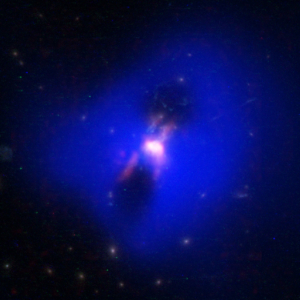
Black-Hole-Powered Jets Forge Fuel for Star Formation
Composite image showing how powerful radio jets from the supermassive black hole at the center of a galaxy in the Phoenix Cluster inflated huge “bubbles” in the hot, ionized gas surrounding the galaxy (the cavities inside the blue region imaged by NASA’s Chandra X-ray observatory). Hugging the outside of these bubbles, ALMA discovered an unexpected trove of cold gas, the fuel for star formation (red). The background image is from the Hubble Space Telescope.
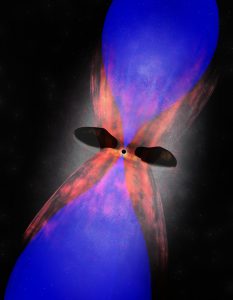
The Center of the Phoenix Cluster
Artist impression of galaxy at the center of the Phoenix Cluster. Powerful radio jets from the supermassive black hole at the center of the galaxy are creating giant radio bubbles (blue) in the ionized gas surrounding the galaxy. ALMA has detected cold molecular gas (red) hugging the outside of the bubbles. This material could eventually fall into the galaxy where it could fuel future star birth and feed the supermassive black hole.

